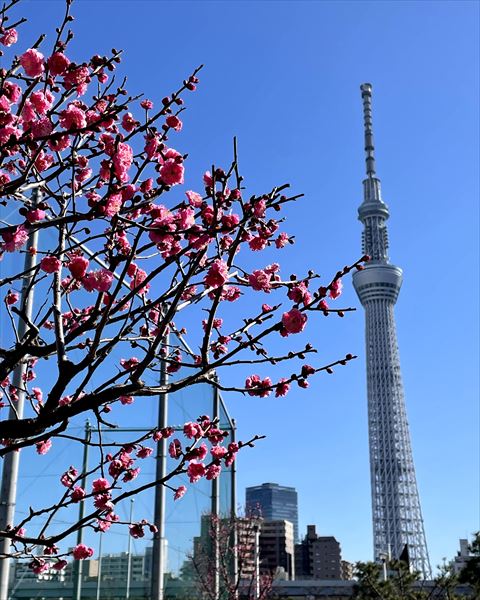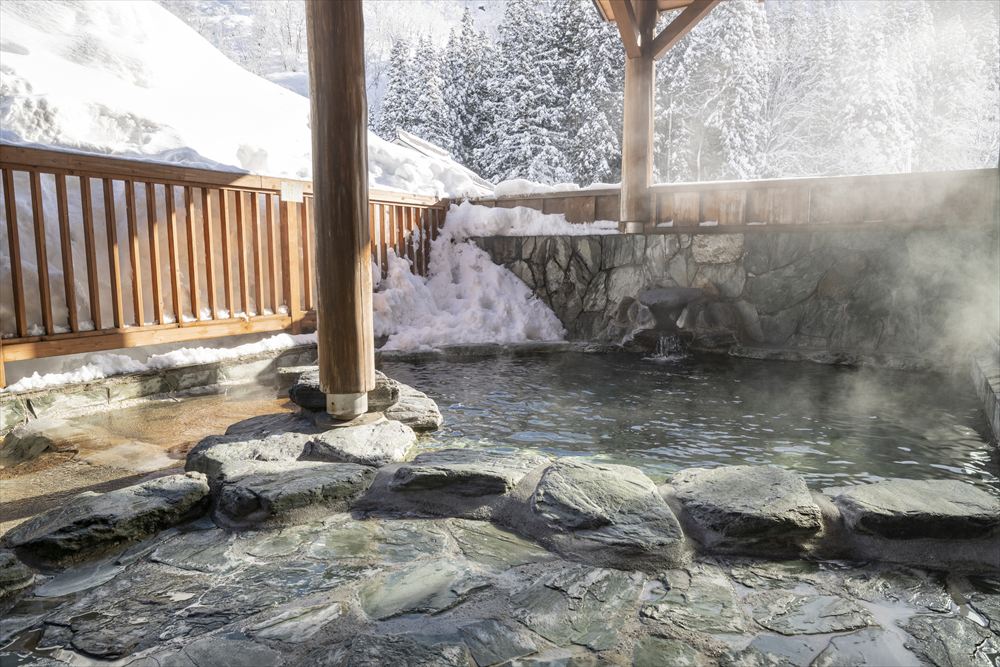Tokyo presents various aspects, from clusters of high-rise buildings to shrines and to parks filled with trees. If you are interested in the lives of the local people living in Tokyo, take a train and get off at Koiwa Station or Shin-Koiwa Station. You will be able to enjoy a glimpse of the bustling and friendly lives of ordinary people living in Tokyo.
Fully enjoy Tokyo the way the locals do! Koiwa / Shin-Koiwa
Days & Nights at Shotengai Shopping Streets
Around Koiwa and Shin-Koiwa stations, there are several shotengai (shopping street), serving as a kitchen for people, including “Flower Road Shotengai,” which has long been a fovorite of local people, in front of Koiwa Station, and “Lumiere Shotengai,” in front of Shin-Koiwa Station, which is lined with about 140 shops and stores, including delicious delis and cafés. Among them, “Showa-dori Shotengai” in front of Koiwa Station has a surprising spot called “garake wall,” a wall entirely decorated with over 6,000 mobile or feature phones. This wall was created by the owner of “Wataden,” an electronics store with a history of over 80 years in business, who was so attached to old mobile or feature phones that he couldn’t dispose of them and started putting them up on the wall.




These shopping streets, which are busy with housewives and students during daytime, may show different faces at night. In particular, “Sun Road Shotengai” and “Jizo-dori Shotengai,” in front of Koiwa Station, have lots of pubs, where many workers visit to relax after work at night. If you like drinking, especially of the “pub crawling” type, these places could be your paradise.

| Access | Tokyo Sta. → JR Sobu Line rapid (15 min.) → Shin-Koiwa Sta. / Akihabara Sta. → JR Sobu Line local (13 min.) → Shin-Koiwa Sta. → (3 min.) → Koiwa Sta. |
| URL | http://www.wataden.net/ |
Sento (public bathhouses)
This area has many sento that have been loved by local people for many long years. “Tomono-yu” was a pioneer sento innovating baths filled with soft water, which is now commonly used, and what is worthy of attention are the miniature railroads in the lobby! The miniature railroads were created with the intention to entertain the customers. When you visit this place, you can play with the cute kanban neko, or mascot cats, welcoming customers at the front desk!




| URL | https://www.tomonoyu.tokyo// |
Parks
Parks are the places where the local people visit to take a break, relax, and feel refreshed. Shin-Koiwa has “Nishi Shin-Koiwa 5-chome Park,” (nickname: Monchhichi Park). The nickname comes from “Monchhichi,” a character loved around the world created by Sekiguchi Corporation that is located in this area. The park has lots of cute Monchhichi designs. The area around Shin-Koiwa Station has other Monchhichi-based decorations and Monchhichi-designed manholes.



| URL | http://www.katsushika-kanko.com/guide/entertainment/spot_1841.php/ |
Power Spot
Zenyo-ji Temple has a “yogo no Matsu” pine tree, which is said to have the largest area of foliage overgrowth in Japan. The majestic, powerful appearance of the tree draws attention as a “power spot” – a location thought to be flowing with mystical energy. Designated a Japanese Natural Monument, the Japanese black pine tree of over 600 years of age will allow you to feel the life force of the tree as well as the thoughts and passion of the local people who have long continued protecting it.



| URL | https://www.city.edogawa.tokyo.jp/e_bunkazai/bunkazai/toroku/shokubutsu018.html?hl=en |
The shopping streets and the area around the stations have lots of other unique shops!
Nakajima Shoten
Located at the North Exit of Koiwa Station, this traditional incense store offers various kinds of incense and candles, including traditional-style incense, incense burners and stick-type incense for casual use. Visitors also enjoy the antique charm of the historic wooden building.
Access: 2 min on foot from the North Exit of Koiwa Sta.&
Business Hours: 10:00~19:30
Closed: Sundays




Kouwayaki Reisho / nicorico
This pottery studio creates goods exclusively using the soil of Edogawa City, where Koiwa Station is located. Previously, the soil of Tokyo was considered unsuitable for pottery, but a potter, Nobuhiro Hayashi, investigated the soil of his hometown and invented “Kouwa-yaki ware.” The name “Kouwa” comes from the ancient name for the Koiwa area, “Kouwari.” The pottery studio and shop, where Nobuhiro and his daughter Ayako display their creations, is located near Koiwa Station.
Nobuhiro uses Kouwa soil to create works that make a strong impression, whereas Ayako produces pop infused, cute pieces while using traditional techniques.
Seeing the differing character of their works next to each other is a sight one will never tire of.
Kouwayaki Reisho http://www.kouwayaki.com/ Access: 4 min on foot from the South Exit of Koiwa Sta.
nicorico http://www.nicorico.com/
Business Hours: 11:00~19:00
Closed: Sundays and holidays (it may be closed irregularly)





For food information around Koiwa Station, check out the video!
TOKYO EDOGAWA GOURMET NAVI
https://www.youtube.com/channel/UC92Y-x7jWKfHQ0EQlcGZRsQ
In November every year, a food festival is held around Shin-Koiwa Station!
Not only the restaurants and shops around the stations, but also popular restaurants and shops from all over Katsushika City come together for the festival.
https://www.city.katsushika.lg.jp/tourism/1000066/1004933/1017267/1028977.html








